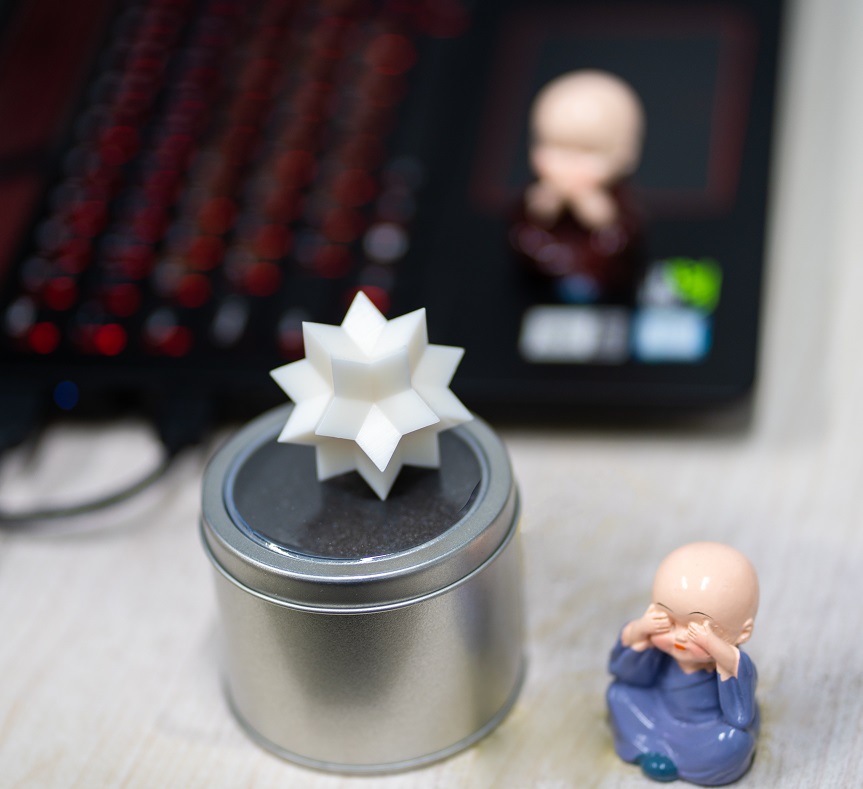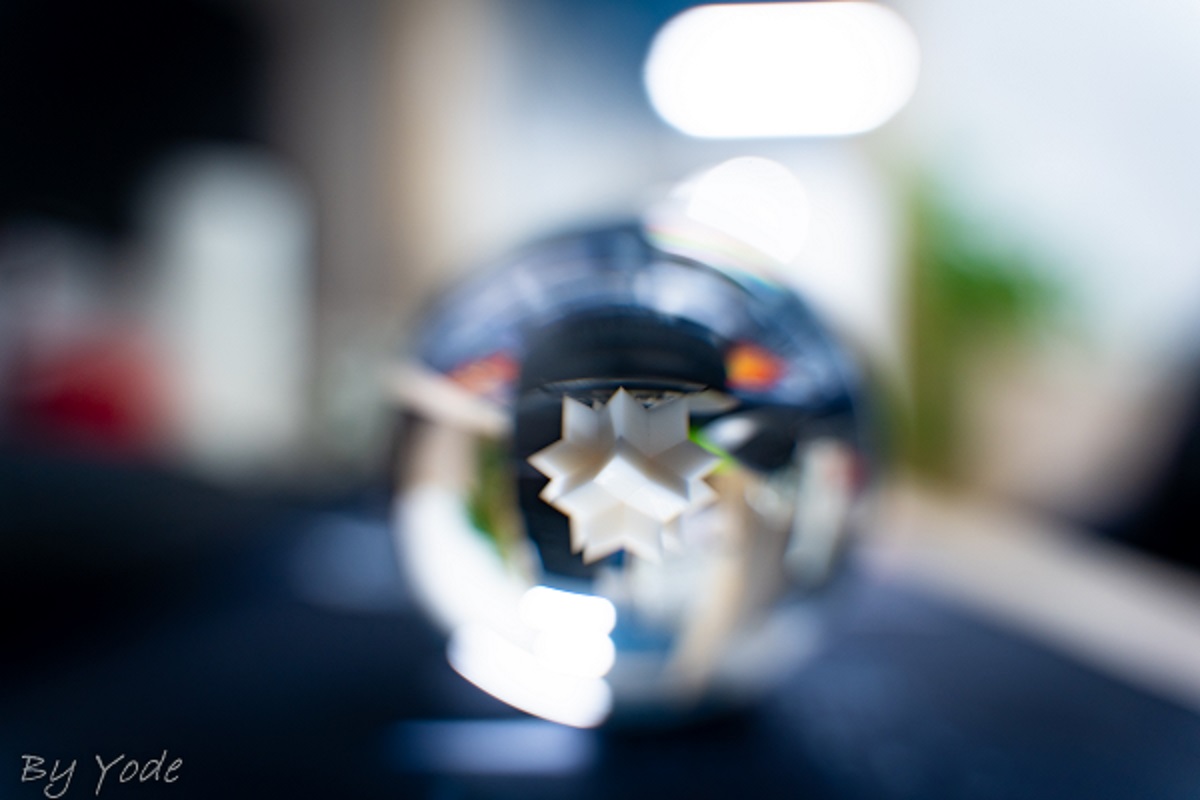Erik's Anamorphic Reflections Seasons (2D and 3D, cylindrical and sphere) are much more exciting and certainly more productive than "The Game of Thrones".
Something is similar. I printed a 3D spikey model ?top image?a few months before. Later one of my friends took a photo with a crystal ball ?bottom image?. Its interesting to compare the result of spherical lens and spherical mirror. And notice their difference.


It's interesting to modeling a spherical lens with Mathematica.
Later it's possible to combine mirrors and lens to build more complex optical system.